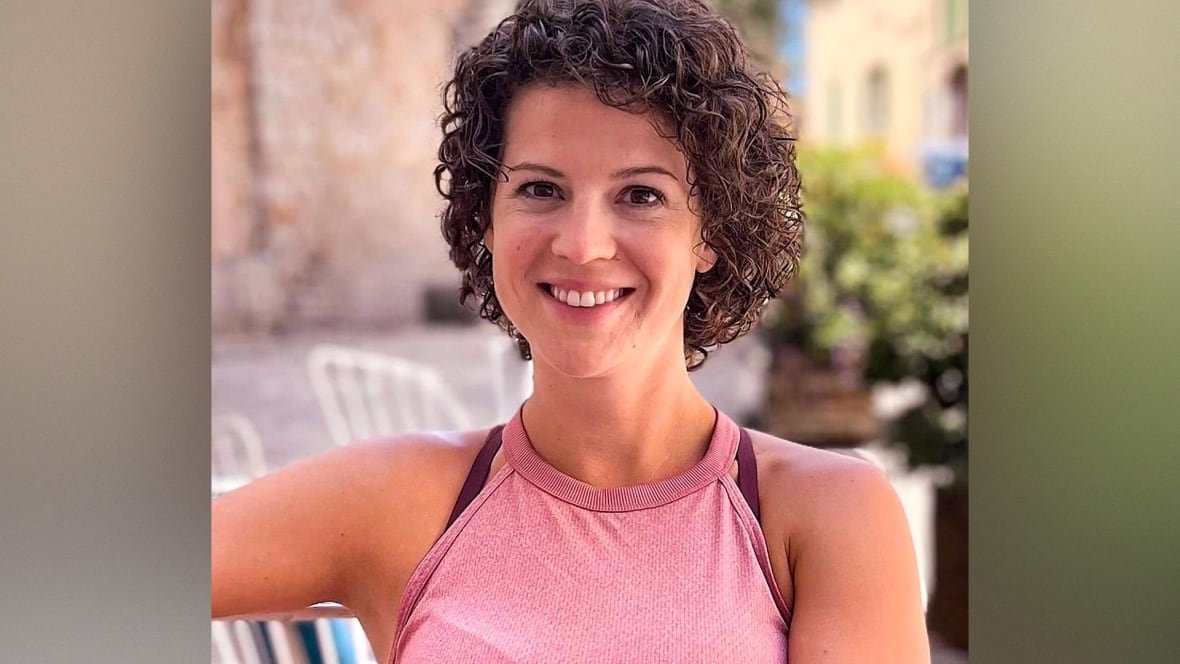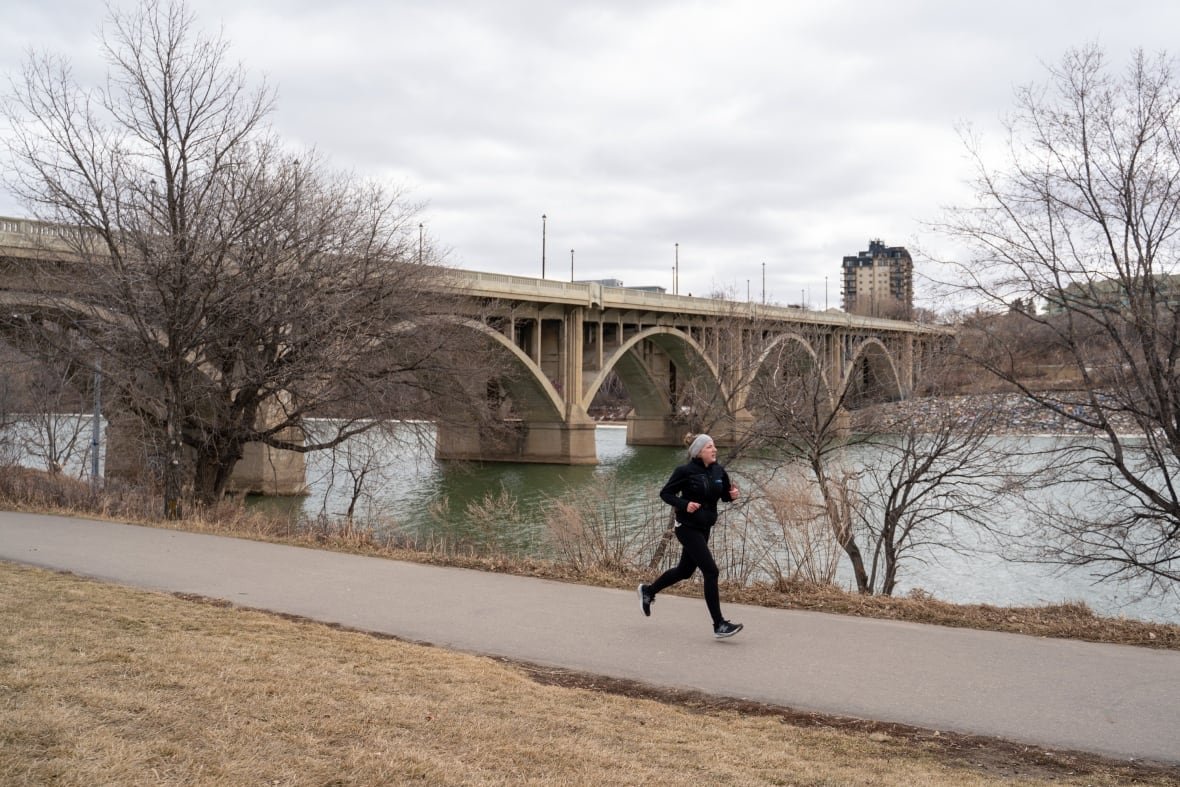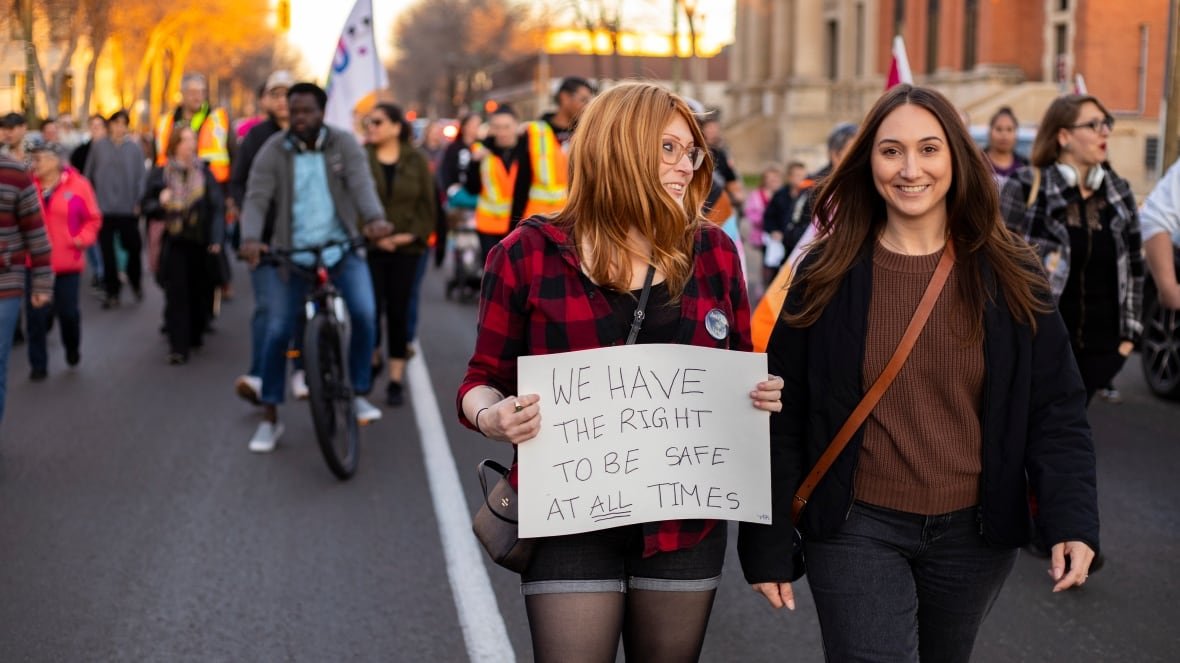WARNING: This article may affect those who have experienced sexual violence or know someone affected by it.
Women are taught to run in groups, run in daylight and change up their routes often, in case someone is watching them.
They can buy pepper spray, or sports bras designed with small pockets that can hold a knife. They can download safety apps triggered by screams.
Tips and tech abound, meant to help women runners stay safe outside. But many experts and advocates say what’s missing is teaching men not to assault women in the first place.
As Justice Canada points out, men commit the vast majority of sexual assaults against women. And of the 170 cases of women and girls killed in Canada in 2022, when an accused was identified, it was a man 82 per cent of the time, according to a report by the Canadian Femicide Observatory for Justice and Accountability.
“No woman should be afraid to be active. Women deserve to feel safe,” said Abby Lokits, 31, whose sister-in-law Alyssa was murdered Oct. 14 while running in Nashville, Tenn.
“There is no quantifying metric, no qualifying factor that determines safety for women,” Lokits told CBC News in a written statement.

An Adidas survey last year found that 92 per cent of 4,500 women in nine countries reported feeling concerned for their safety when they go for a run. And more than two-thirds of women surveyed in a 2024 U.K. study said they’d experienced some form of abuse while out running.
Historically, male aggression has been normalized, said Ummni Khan, an associate law professor at Carleton University in Ottawa. Many put the onus on women to “be street-smart,” she said, and not make themselves “a target.”
“I think there’s been a serious challenge to this kind of thinking, thanks to feminism, and equality movements in general,” said Khan, who researches gender, sexuality and the law.
“But I also believe that many basically believe it’s a lot easier to scare women and … ‘take precautions’ or take a self-defence class than it is to convince violent men to refrain from being violent.”
A study from Simon Fraser University researchers looked at what makes trails attractive to runners and joggers — and found some women are less likely to run in the woods for fear of being attacked.
‘None of that mattered’
Running has arguably never been trendier, with race registrations at record highs, 4.7 million #running posts on TikTok and elite running brand Hoka’s sales up 34 per cent this year.
But for many women who participate in the sport, there’s a constant fear of being attacked or even killed, as several female U.S. runners have been in recent years. Most recently was Alyssa Lokits, 34, who was shot on a popular hiking trail by a man who had followed her and attempted to rape her.
The Mill Creek Greenway, where Lokits was jogging, is increasing its security measures in the wake of her killing.
Jackie Jones, superintendent of the Metro Board of Parks and Recreation, advised trail users to use the buddy system and limit distractions.

Abby Lokits, Alyssa’s sister-in-law, says Alyssa followed safety precautions: She ran in the middle of the day, on a populated trail; she took self-defence classes. She had six brothers, “and she could stand up to any one of them,” Lokits said.
“She was the fiercest, bravest, strongest woman I have ever met in my life. But none of that mattered.
“Because a man decided one day that he wanted to hurt a woman, and would do whatever it took to get what he wanted, including taking her life.”
Putting the responsibility of “staying safe” onto women is a barrier to actual change, because it shifts the focus from the systems that allow gendered violence to fester, said Jean Ketterling, assistant teaching professor at the University of New Brunswick, Fredericton, who is also an avid trail runner.
Responses like telling women not to run alone “[hamper] our freedom of movement,” Khan said.
“This is so ironic because for many of us, running outside is such a joyful, empowering assertion of ourselves.”
Don’t focus on individuals, says expert
Despite the recent cases in the news, crime statistics indicate that these types of mid-run attacks are rare, and that women are far more likely to be killed by someone they know. In Canada, just one per cent of gender-related homicides were perpetrated by a stranger, according to Statistics Canada.
Still, women in Canada have been killed while exercising alone, like Vancouver’s Wendy Ladner-Beaudry in 2009, Ottawa’s Ardeth Wood in 2003 and Toronto’s Margaret McWilliam in 1987.
The family of Ardeth Wood honoured the Ottawa woman 10 years after she was killed.
On top of that, according to Statistics Canada data released in 2019, one in three women reported experiencing unwanted sexual behaviour in public.
“The way to stop this pattern is to get away from individualizing the problem, and instead think about root causes of violence,” said Ketterling.
Choosing to speculate on the motivations of an individual attacker ignores the societal conditions that make gendered violence so common, she said, in favour of labelling perpetrators as unique monsters.
And again, it puts the responsibility to stay safe on the victims, Ketterling said. Maybe by buying a sports bra that can hold mace.
“While trying to solve a deeply rooted social problem with commercial trinkets feels gross, it has been happening for a long time — and hasn’t solved the problem.”

What are the root causes?
There are a number of theories about why some men attack women, said Khan. Feminist theory posits that, under a patriarchy, women are seen as objects, so a man may feel entitled to act on a violent impulse and attack her, she said.
There are also power-related reasons, she said. Mental health issues may also be at play, like personality disorders, psychopathy or unresolved trauma.
“To address these assaults, we need to continue to challenge patriarchal ideology that objectifies women, that fosters hatred of women, that says that women who are out in the public alone are asking for it,” Khan said.
Still, she said, demonizing men — even those who have attacked women — doesn’t help. The justice system needs to allocate more resources toward understanding their motivation, and what kind of interventions and rehabilitation programs might work, Khan said.
Early interventions, mental health resources and education for all genders should also be a priority, she said.
‘I’m angry. I’m frustrated. I’m exhausted.’
In 2022, after the murder of Eliza Fletcher, a kindergarten teacher and mother of two who was out on a morning run, U.S. runner Melissa Sullivan wrote an op-ed in the Washington Post expressing her frustration.
“Like so many other women, I’m angry,” she wrote. “I’m exhausted by the expectation that the onus to prevent the harassment and intimidation of female runners is, should be and always will be on us.”
Yet both Khan and Ketterling say they see reason for hope. The “Slutwalk” and “Take Back the Night” rallies went global, protesting sexual violence, and the idea that victims are “asking for it” based on what they wear or what time they are out. Advocates across Canada are working to ensure discussions of gendered violence are part of sexual health education.

And many male runners are asking how they can be allies, with articles providing tips on non-threatening body language, giving women space and advising them to change their routes if they’ve been running behind someone for a while.
“I do think that society is shifting. I have to believe it. The progress is slow and uneven, but the discourse has changed,” Khan said.
But for Abby Lokits, still grappling with Alyssa’s death, none of it makes any sense.
“Because it is senseless,” she said.
“At the same time, for some reason, this senseless act continues to happen again. And again. and again.”
For anyone who has been sexually assaulted, there is support available through crisis lines and local support services via the Ending Violence Association of Canada database.
For anyone affected by family or intimate partner violence, there is support available through crisis lines and local support services.
















